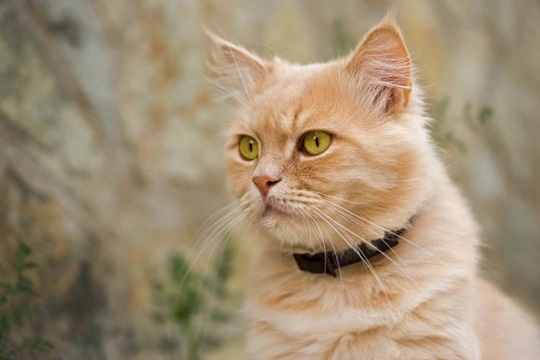
Five things to avoid when it comes to cats, collars and safety
Whether or not cats should wear collars is something of a contentious issue; they’re not required to by law, and collars are quite a hazard to cats that roam freely. However, if your cat is forever trying to move in with other people and you need to ensure that others know he has a home, putting a collar on them is one of the easiest ways to achieve this.
Deciding whether or not your own cat needs a collar then is a personal choice; but if you decide that they do, check this article first to learn about five things to avoid when it comes to cats, collars, and safety. Read on to learn more.
Don’t use hanging ID tags
The main reason most people put a collar on their cat is to make the cat identifiably theirs. Simply having a collar on the cat full stop lets people know to a degree that the cat is owned and cared for or not a stray (although a cat in a collar could still be lost, and on the flipside, cats lost or living wild for a while tend to lose their collars)!
However, having ID on the collar lets others know not just that somebody owns and cares for the cat, but who that somebody is. This might be appropriate if for instance, your cat likes to roam a lot, or is adept at convincing total strangers that he is homeless and hungry to score a second dinner!
If your cat has a health condition, you can even use the collar to indicate this, so that if they were found, those who found them would see an added sense of urgency in getting them home fast and also to advise on things like not feeding the cat (for instance, if the cat is diabetic).
To achieve all of these things aside from simply letting people know a cat is owned by nature of the collar itself, you need to have some ID or wording on the collar to communicate this info to anyone it might concern.
The most obvious way of achieving this is to hang a tag on the collar, but this is actually a bad idea as it increases the risk of the tags snagging and the cat hanging.
Choose instead a low profile and close-fitting alternative like a barrel you can put a tiny piece of paper in and that slides onto the collar; or for minimal information like “do not feed” or “microchipped” get a collar personalised to this effect and avoid having anything on the collar full stop.
Don’t attach a bell
On which note, given that ID tags are a bad idea for cat collars because they hang and can snag on things, so too is a bell. People tend to put a bell on their cat’s collar as they think it will reduce the cat’s ability to catch prey (which it rarely does) or even just for decoration.
However, bells are just as great a risk for snagging on things and are even higher risk for catching your cat’s own claw if they scratch as ID tags, as they have tiny openings to allow the sound out.
Additionally, the sound of the bell itself as a constant jingle results in your cat’s brain eventually tuning out that sound frequency as it is an annoyance; until then, it can mask or confuse the sound of things your cat needs to hear and be aware of (risks like traffic) and after that, it can compromise your cat’s safety as other sounds in that same frequency will be missed too.
Don’t use a homemade collar
It is a bad idea to make a collar for your cat, as there are a wide range of safety features needed in collars, all of which are designed to basically make the cat’s collar easy to remove. If you make a collar for your cat, these features will be absent, and also, putting the time and effort in to making something that needs to be easy to lose in order to function effectively and be safe is something that few of us would be willing to do!
Don’t use a collar with a buckle
A buckle fastener for a collar is a secure fastener; if you pull on the two sides of the fabric this further locks and engages the buckle, in contrast with other fasteners that release when you apply enough pressure. This means that for a buckled collar to break relies upon the collar’s fabric or an inbuilt safety device releasing; but choosing a clasp that itself will release under pressure is wise too.
Don’t use a flea collar
Flea collars are very inexpensive and can seem like a good idea as a result, to treat fleas and by means of being in a collar, to show that your cat has an owner.
However, point one, they are wholly ineffective at treating fleas (and may well cause dermatitis in your cat as they’re infused with a toxic pesticide, which is then in close contact with your cat’s skin) and also tend to be secure collars with an elastic strip that in theory allows them to release, but that in reality, rarely does without a high degree of pressure being applied.



